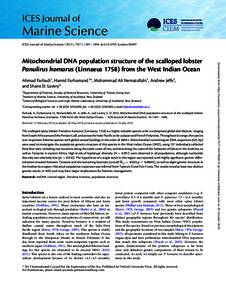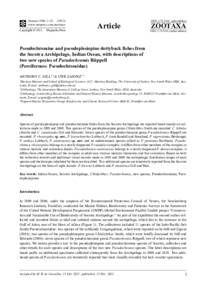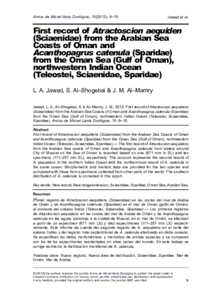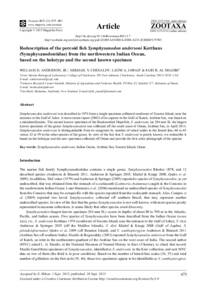Document
Mitochondrial DNA population structure of the scalloped lobster Panulirus homarus (Linnaeus 1758) from the West Indian Ocean.
Identifier
DOI: 10.1093/icesjms/fst097
Contributors
Farhamand, Hamid., Author
Nematollahi, Mohammad Ali., Author
Jeffs, Andrew., Author
Lavery, Shane D., Author
Publisher
Elsevier.
Gregorian
2013-11
Language
English
English abstract
The scalloped spiny lobster Panulirus homarus (Linnaeus, 1758) is a highly valuable species with a widespread global distribution, ranging from South Africa around the Persian Gulf, and across the Indo-Pacific as far as Japan and French Polynesia. Throughout its range, the species is an important fisheries species with global annual landings in the order of 3000 t. Mitochondrial control region DNA sequences (625 bp) were used to investigate the population genetic structure of this species in the West Indian Ocean (WIO), using 137 individuals collected from four sites, including two locations along the south coast of Iran, and sites along the coast of the Sultanate of Oman in the Arab Sea, as well as Tanzania in eastern Africa. High levels of haplotype diversity (H = 0.997) were observed in all populations, although nucleotide diversity was relatively low (pi = 0.035). The hypothesis of a single stock in this region was rejected, with highly significant genetic differentiation revealed between Tanzania and the remaining locations (overall ΦST = 0.039, p < 0.00001), as well as slight genetic structure in the Arabian Sea region. Historical population expansion was inferred from Tajima's D and Fu's F tests. The results reveal at least two distinct genetic stocks in WIO and may have major implications for fisheries management.
Member of
ISSN
1054-3139
Resource URL
Citation
Farhadi, Ahmad, Farhamand, Hamid, Nematollahi, Mohammad Ali, Jeffs, Andrew, & Lavery, Shane D. (2013). Mitochondrial DNA population structure of the scalloped lobster Panulirus homarus (Linnaeus 1758) from the West Indian Ocean. ICES Journal of Marine Sci
Category
Journal articles




